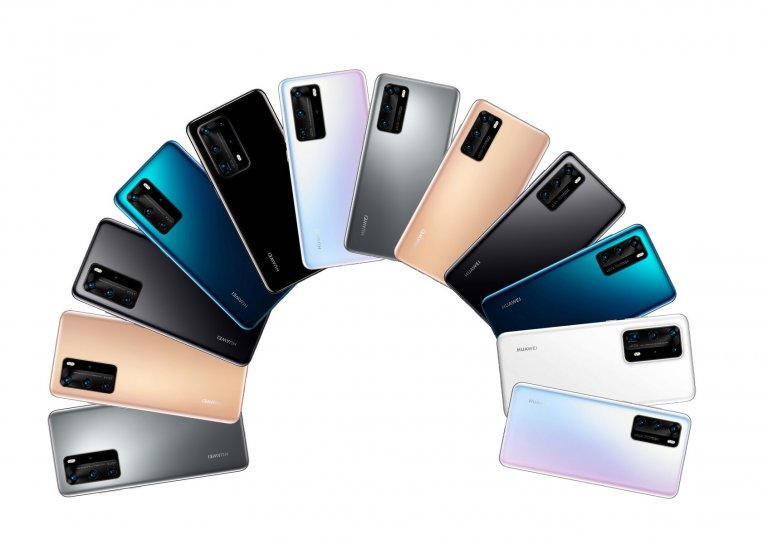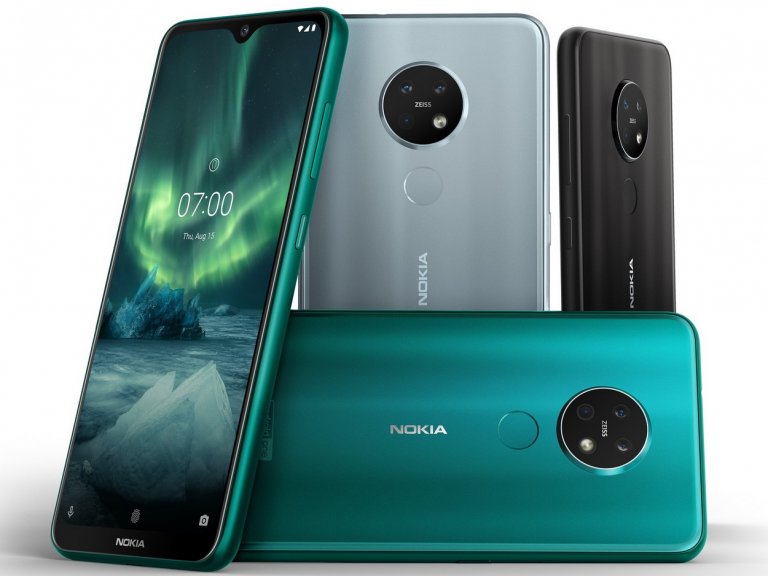TaoTronics has several wireless in-ear earphones on the market, but the Soundliberty 79 stands out from the other models. This is where the manufacturer uses AI-supported technology to noticeably suppress loud ambient noise and achieve crystal-clear call quality. We tested how well and whether this really works in practice with our test copy.

Almost 5 months ago we reported on the in-ear Bluetooth earphones Soundliberty 53 (TT-BH053) from Taotronics, now the model Soundliberty 79 (TT-BH079) has been released, which we are also provided for a short test to have.
Similar to the Soundliberty 53, the Soundliberty 79 is delivered in a small paper box, together with the magnetic charging box, a USB Type-C cable (instead of the micro-USB cable on the previous model) and a quick guide. On the outside, they are more compact, both the in-ear earphones themselves, which are now more rounded instead of the elongated design, and the shrunk charging station, which uses four LEDs to indicate the charge level. There is also a blue LED on the in-ears itself as a status indicator. The fit is comparatively good, but for smaller ears the new earphones feel larger than the Soundliberty 53. The scope of delivery also includes additional rubber mounts without the hooks if the perfect fit has not yet been found with the normal rubbers. As usual, ear cushions are available in three different sizes for the ear canals.

With its 300 mAh battery, the charging station can charge the earphones up to three times with their capacity. The battery of the In-Ears should also offer 8 hours of listening pleasure that is 3 hours longer than the Soundliberty 53. We got a little over 6 hours at 60% volume in practice. According to the manufacturer, the Bluetooth range has also increased thanks to a better antenna from 10 meters to 30 meters. Furthermore, these earphones are waterproof according to the IPX7 standard and thus survive a temporary immersion.
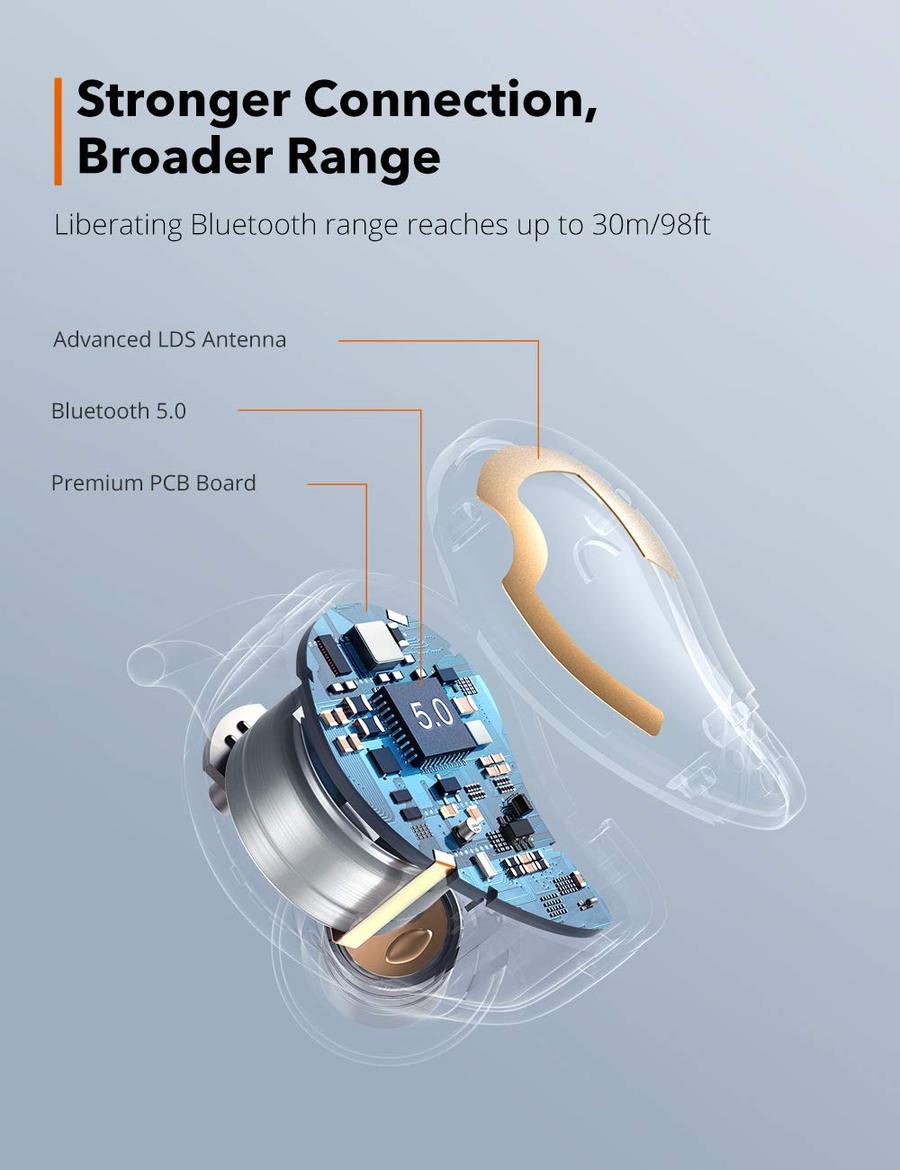
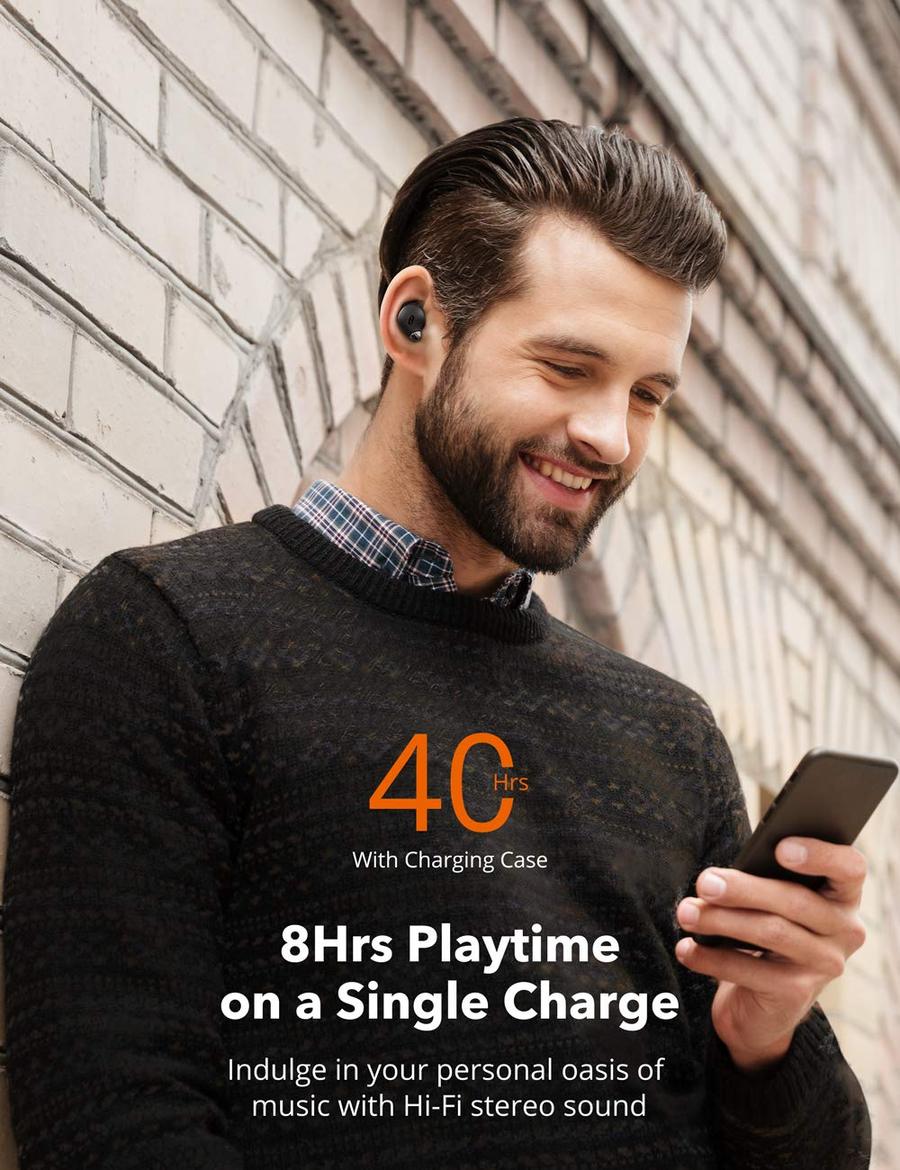
The connection establishment works without delay on the first start with our Android smartphone via Bluetooth, here Bluetooth standard 5.0 is supported. The new model also has numerous control commands. Different typing commands on the sensor surfaces of the in-ears control the volume and music, or answer calls. The earphones can both be used together or, for example, can also be used separately for telephone calls, whereby each of the two also has a microphone.
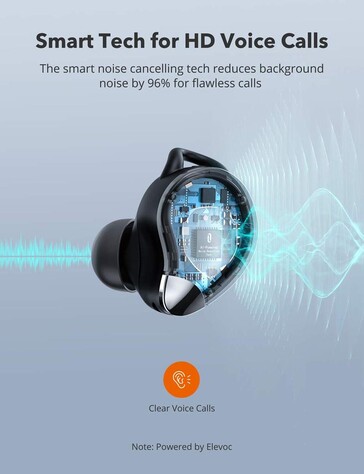
 The biggest innovation in the Soundliberty 79, however, is the so-called “Smart AI Noise Reduction Technology”, in simple terms, a selective noise suppression that is controlled by artificial intelligence. Ambient noises should be filtered out up to 96 percent, while conversations should have 95 percent voice isolation. In this way, disturbing background noises should be masked out. Most of the time, this works quite well in different situations and noticeably improves the quality of the conversation, such as road noise, but sometimes the artificial intelligence fails. During the practical test, the wind noises were not filtered convincingly enough when driving a car on the motorway, these were still perceived very clearly by the interlocutor despite AI. Nevertheless, the bottom line is an audible difference to the Soundliberty 53 and other in-ears without noise reduction technology.
The biggest innovation in the Soundliberty 79, however, is the so-called “Smart AI Noise Reduction Technology”, in simple terms, a selective noise suppression that is controlled by artificial intelligence. Ambient noises should be filtered out up to 96 percent, while conversations should have 95 percent voice isolation. In this way, disturbing background noises should be masked out. Most of the time, this works quite well in different situations and noticeably improves the quality of the conversation, such as road noise, but sometimes the artificial intelligence fails. During the practical test, the wind noises were not filtered convincingly enough when driving a car on the motorway, these were still perceived very clearly by the interlocutor despite AI. Nevertheless, the bottom line is an audible difference to the Soundliberty 53 and other in-ears without noise reduction technology.
Of course, in addition to the call quality, we also tested the music playback and this is surprisingly bass-heavy for the tiny housing. The mid and high tones line up behind the bass, but the 6 mm PEEK and PU high fidelity drivers still round off the sound picture very balanced. However, TaoTronics could have given the Soundliberty 79 a little more volume, because music has to be played over long distances only at high to maximum volume. For the size and the price you get unexpectedly well balanced music enjoyment.







